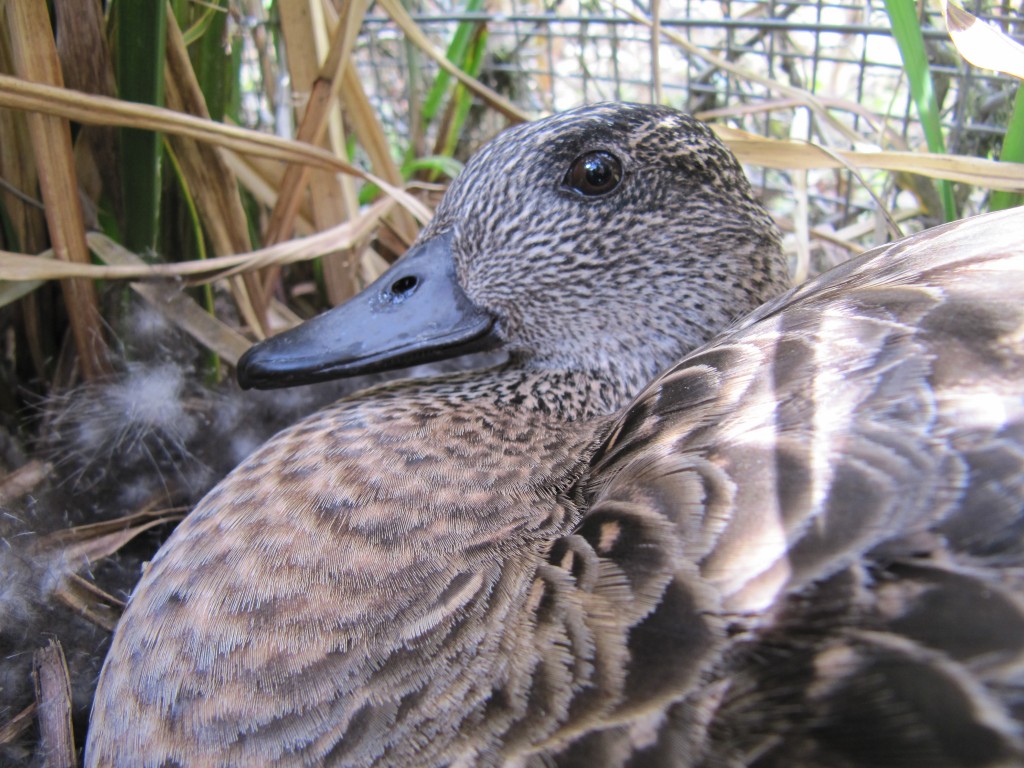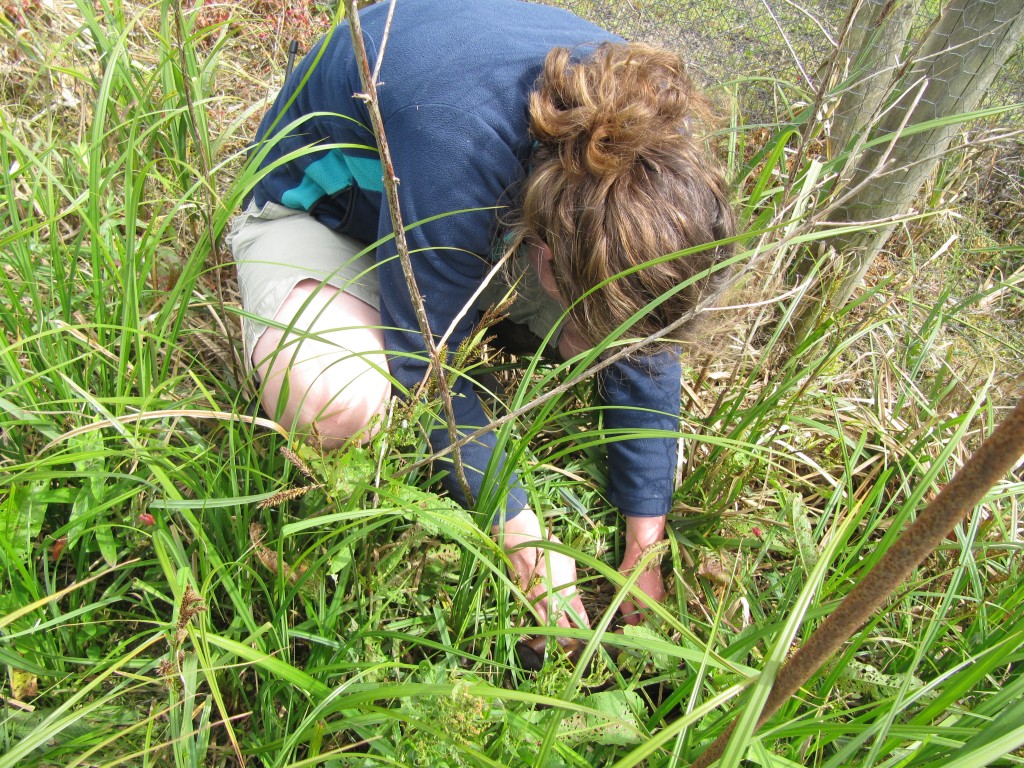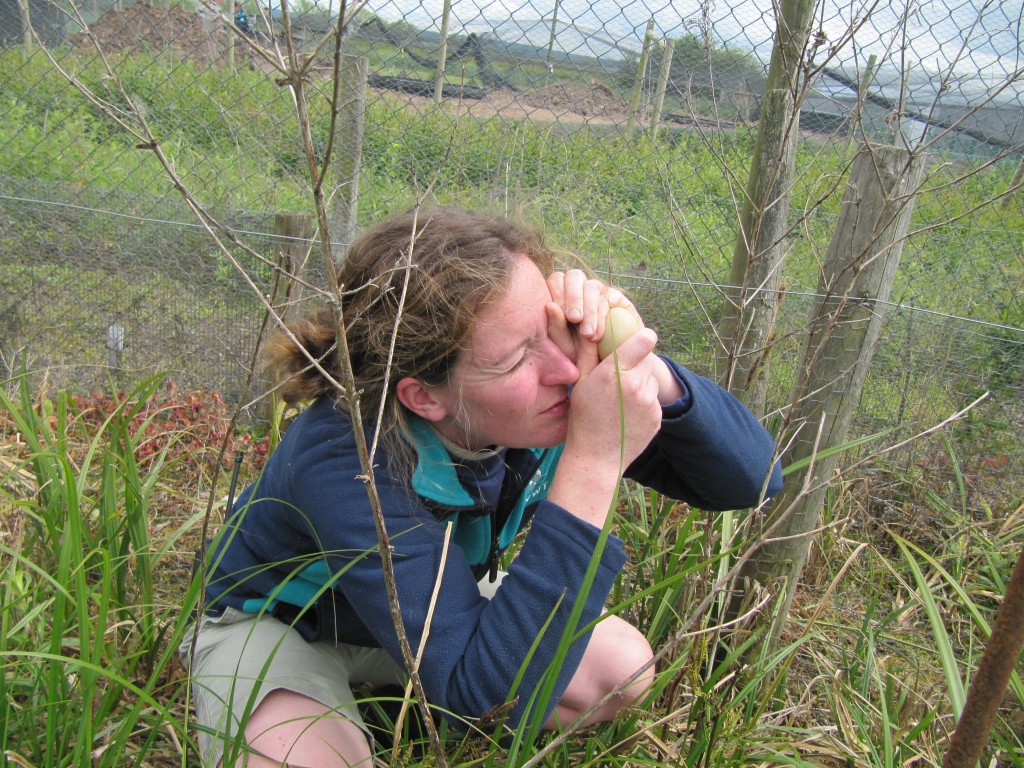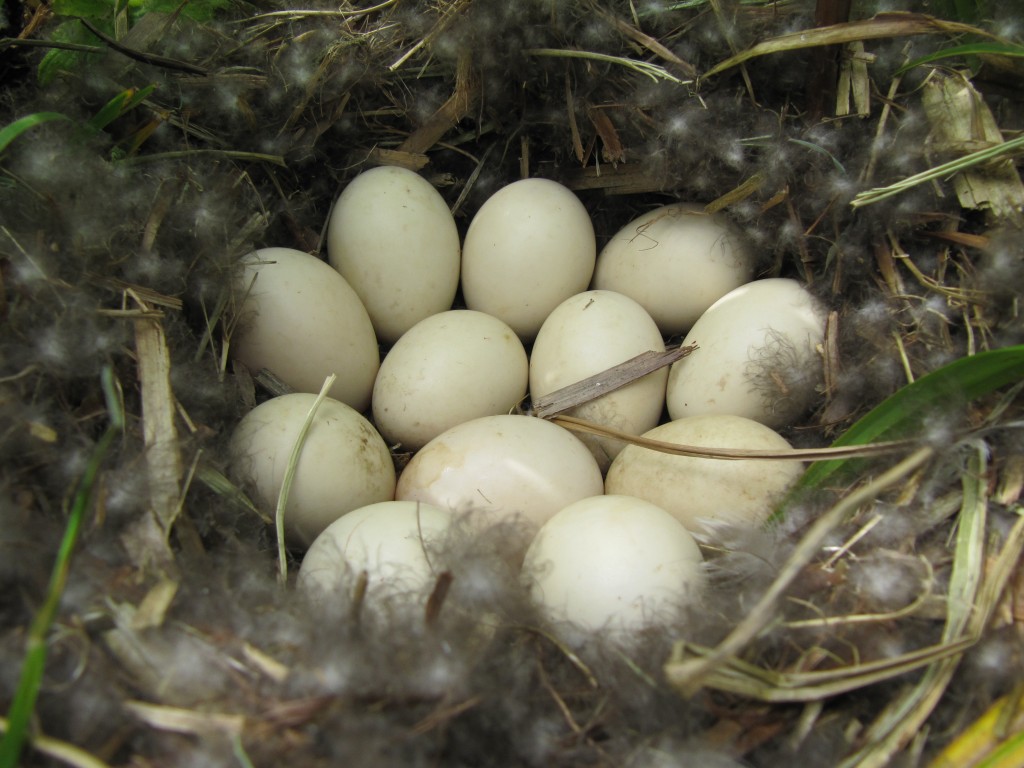Nest checks at Slimbridge.
In the last few months I have been over-seeing the breeding efforts of some beautiful wildfowl species. Working with birds is definitely a privilege, and I thought that I might share with you some of the thoughts and processes behind it here in my blog.
At WWT Slimbridge we do quite a bit of nest checking; not least to protect the eggs and confirm fertility but also to health check the incubating female. Whilst we want to breed our birds according to the demands of our collection plan, the reality is that often their most natural reproductive behaviour can put them at risk. An incubating female can lose up to one third of their body weight during the incubation process, and depleting their vital fat stores can illuminate and exacerbate underlying conditions which can then take a hold. As a result it is very important to have an acute understanding of each of your females and their typical behaviours during the incubation process.
The beautiful female below is an American wigeon. In normal circumstances I would never dare attempt to photograph a wigeon of any kind on a nest due to my understanding of their flighty character. This female however, is different. I have never met such a feisty bird and so I risked a quick photo for you. She never leaves the nest when I come knocking! She does however get off her nest for a quick bite to eat mid-morning, and so whilst she was happily occupied with filling her belly, I snuck over to perform her nest check.
The first thing I do is assess how I find the nest. A classic wigeon nest should be covered in a layer of down knitted with soft vegetation in order to camouflage the eggs and retain heat. If I found the nest in any other condition I would begin to worry because a healthy female should protect her nest. If I found it uncovered then this might indicate the she is not taking proper care of her eggs or that she is currently undergoing some sort of discomfort or bullying. Thankfully however this lovely lady had left it looking perfectly maintained.
The photo shows that I mark all of our nests with an iron spigot nearby. This is so that all staff can knowingly avoid the nest site at all times during feeding and maintenance duties. The first part of my nest check over, the next stage is to candle the eggs. I do this by creating a tunnel with my left hand and using it to look "through" the airspace end of the egg directly into the sun. The sun acts as a big light bulb and illuminates the airspace in contrast against the embryo growth beneath. What I can actually see using this technique is a line, and the definition of that line can tell me a lot.
Field candling is harder or easier depending on the natural shell pigmentation and thickness of the egg. It is hard to get an accurate observation on some species, but for the wigeon it is a perfect technique to quickly assess whether the eggs are fertile or not. An infertile egg will show up as a line contrasting against a pale yellow colour given off by light refracting from the yolk, and the line will often wobble as the infertile mass begins to break down. A fertile egg will show as a line contrasting against a pink mass underneath, and the line should be crisp, straight and level. A rotten egg will show as a line contrasting against a nasty brown interior; often given away by it's pungent smell and eggshell discolouration...
The eggs in this nest were a bit of a mix, and this is not necessarily all good... Two of the eggs were rotten or "addled" and these can be seen in the nest below. They are the two second-front-left with the poop on them! 7 of these eggs were infertile or "clear," and just 3 of these precious eggs were fertile. Candled at 14 days there was no doubt about it. Because the good eggs only totalled three, I was loathe to leave them with her any longer. I simply had to remove the rotten eggs, (and the infertile eggs that had been touching them.) The jump from 12 eggs to 5 (3 good 2 clear) would feel quite extreme to her, and she would sense that I had interfered. In the end I left her three good, 2 clear, and 2 wooden eggs.
My last job was to give her a non-invasive health check. After I left the nest exactly as I found it I settled down in the corner to watch her feed. Incubating females tend to fill their crops with food (for digestion later), have an exceptionally quick preen, defecate and then dry off. In the case of some species (such as the Wigeon family) the male will join her and accompany her for the duration of her rest, enjoying some display behaviour. Particular males may have already started their moult and may not want to draw too much attention to themselves.
She went through the processes and settled down to some preening at the edge of the pond and I was pleased to see her plumage was tidy and her breast patch (where she physically plucks the feathers and down to line the nest) was not bare. She was bright eyed and bushy tailed and clearly very keen to get back to her eggs. Females can use specific techniques during incubation to change the humidity in the nest environment if needed. A nest in an arid environment can be humidified by the female sitting back onto her eggs with a damp breast. A nest in a humid environment is at risk of bacterial transfer if the female gets back on to her eggs moist, and in this particular case this female waited until she was dry to re-approach.
She settled back down to incubation none-the-wiser to my activity, and I felt elated that I had hopefully saved her 3 good eggs from rotting. So long as you approach a nest with suitable caution and all the information available to you, then a nest check can help increase hatch rates.





